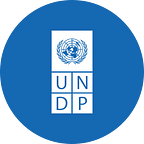Taking the pulse on the emerging practice of portfolios
Milica Begovic, Giulio Quaggiotto, Mariela Atanassova
We’ve noticed an uptick in chatter around portfolio approaches recently, as a result of organizations such as IIPP, the Danish Design Council, Vinnova pointing to portfolios as one of the many ways of implementing missions. Since the mention of portfolios is often accompanied by questions on how to operationalize them, we thought it might be helpful to gather practitioners who are proactively exploring this space to take stock and compare notes on this emerging work.
We introduced an admittedly very “rough and dirty” framework to make sense of this emerging practice and spark self-reflection.
On the one end of this continuum are organizations who are applying a portfolio logic primarily to their innovation work. Their main focus is to generate internal coherence in their innovation portfolio for more effective management and compelling storytelling (the work of the OECD and CGIAR seem to be on this end of the spectrum).
Organizations on the opposite end of the spectrum are primarily concerned with the question of whether the solutions they are bringing to an issue are coherent with its complex, systemic nature. The focus here is not so much on the innovation work, but rather the organization per se: its programs, and, equally importantly, its operations (we pointed to organizations such as Climate KiC and Viable Cities as potential examples). The extension of this work is a radical reimagining of the organization’s purpose and underlying systems so that they support non-extractive, non-colonial logics.
The underlying thread throughout the spectrum is coherence: portfolios are a way to help organizations engage [with the systems they are part of] in a reflection on how their disparate activities align to an overarching intent.
Though far from perfect, the continuum generated a rich conversation. Participants often surprised us in their self-assessment and pointed to a number of emerging questions. 3 common threads stood out, reflecting the diversity of the practice:
- What is the main purpose of the portfolio? Is it primarily a learning instrument or one for achieving efficiencies and/or accountability?
- Portfolios of what- projects, options, experiences, experiments? Connected to its purpose, what’s inside the portfolio and what are the implications for the way we design, implement & learn from portfolio work? This is not just a question of semantics — using terms such as “options” or “experiments” points to different underlying assumptions around an organization’s approach to transformation
- Governance: who “owns” the portfolio, and, in particular, what happens when the portfolio is not owned by a single entity (as is typically the case when it comes to system work). The need to experiment with new governance forms that challenge traditional power dynamics and established funding models came clearly to the fore.
We complemented this broad reflection with a deep dive into two concrete experiences of applying a portfolio logic in the public sector. Jason Pearman, the head of the R&D at the Canadian Government’s youth employment & skills strategy program presented their portfolio implementation journey (inclusive of a fairly dramatic COVID pivot!) and how it led them to reconsider their approach to programming and funding. Vitalii Lukov, deputy mayor of the city of Mykolaiv provided a vivid illustration of what it means to apply a portfolio logic within a municipality to spur social and economic development.
Both experiences pointed to the core promise (and challenge) of portfolio work — that of building organizational capacity for dynamic management, a core competence for the public sector in the age of polycrisis.
The group expressed interest in continuing to share “stories from the trenches” and reflect on different aspects of portfolio practice, so that’s where we are heading next. We are also considering developing an inventory of tools and frameworks developed by organizations to operationalize portfolios in their work. We are particularly keen to reach out to practitioners in the global ‘South’. Do get in touch in case this is of interest.
List of organizations who confirmed participation in the initial call:
Chora Foundation
Viable Cities
Malawi’s National Planning Commission
UNIDO
Slovak Government’s innovation unit
Institute for Innovation & Public Purpose
Climate KIC
Canada Government
Monash University
Danish Design Center
Danish National Center for Public-Private Innovation
City of Aarhus, Denmark
Danish user driven innovation agency for social good
Mobilize Strategy, Denmark
States of Change
City of Mykolaiv, Ukraine
Omidiyar Network
La 27e region (French public transformation lab)
UNDP
